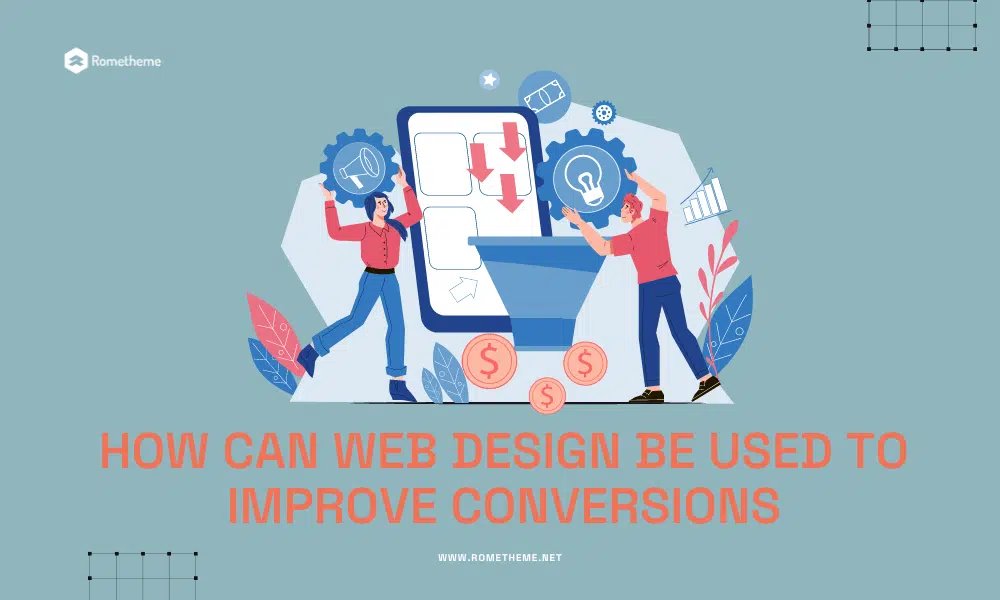

In the fast-paced digital world, having a visually appealing website is no longer enough to capture and retain the attention of potential customers. Businesses need to go a step further by leveraging web design to improve conversions. A well-crafted website attracts visitors and guides them through a seamless journey, encouraging them to take desired actions. In this article, we will delve into the strategies and techniques that can be employed to optimize web design for improved conversions.
Web design plays a vital role in influencing user behavior and encouraging conversions. By focusing on various design elements and user experience factors, you can create an environment that motivates visitors to take action. Let’s explore some key strategies:
An effective call-to-action is a fundamental aspect of web design when it comes to conversions. Placing clear and visually appealing CTAs strategically throughout your website can guide users toward desired actions. Whether it’s signing up for a newsletter, making a purchase, or requesting a quote, the CTA should be prominent, persuasive, and easy to locate.
A seamless and intuitive navigation structure is crucial for enhancing conversions. Visitors should be able to navigate your website effortlessly, finding the information they need without any confusion or frustration. Use logical menu labels, organize content into well-defined categories, and incorporate search functionality to help users find what they are looking for quickly.
In today’s mobile-centric world, ensuring your website is optimized for mobile devices is paramount. A responsive web design adapts to different screen sizes and resolutions, providing a consistent and enjoyable user experience across all devices. Mobile-friendly design not only improves user satisfaction but also positively impacts conversion rates, as mobile users are more likely to engage and convert.
Compelling content that aligns with your target audience’s interests and needs can significantly impact conversions. High-quality images, videos, and written content can captivate visitors and build trust in your brand. By understanding your audience’s pain points and desires, you can create content that resonates with them, establishing a connection and increasing the likelihood of conversions.
Testimonials and social proof are powerful tools to instill confidence and trust in your website, visitors. Incorporating genuine customer testimonials, reviews, and case studies can provide reassurance and alleviate any doubts potential customers may have. Showcase positive experiences and highlight the value your products or services have brought to others, as this can significantly boost conversion rates.
In the age of instant gratification, no visitor wants to wait for a slow-loading website. Optimizing your web design to ensure fast page load speeds is crucial for conversions. Compressing images, minifying code, and leveraging browser caching are just a few techniques that can help improve loading times. A speedy website keeps visitors engaged, reduces bounce rates, and increases the likelihood of conversions.
A: A visually appealing website design captures visitors’ attention and creates a positive first impression. When visitors perceive your website as attractive, they are more likely to stay, explore further, and engage with your content, leading to increased conversion rates.
A: While it is not mandatory to hire a professional web designer, it can greatly benefit your efforts to improve conversions. Professional designers possess expertise in creating visually appealing and conversion-focused designs. They understand the principles of user experience (UX) design, usability, and conversion optimization, allowing them to craft a website that maximizes conversions and achieves your business goals.
A: Color psychology is a powerful tool that can be harnessed in web design to influence user behavior and improve conversions. Different colors evoke specific emotions and convey certain messages. By understanding the psychological impact of colors, you can strategically use them to create a desired mood and encourage users to take action. For example, using vibrant and contrasting colors for CTAs can make them more noticeable and compelling, increasing the likelihood of conversions.
A: Absolutely! Typography plays a crucial role in web design and can significantly impact conversions. The choice of fonts, font sizes, and spacing can affect readability and user experience. Legible and visually appealing typography enhances the overall design and makes it easier for visitors to consume your content. Additionally, carefully selected typography can convey professionalism, trustworthiness, and brand identity, positively influencing conversions.
A: Website responsiveness refers to the ability of a website to adapt to different screen sizes and devices. With the increasing use of mobile devices, having a responsive design is essential for conversions. A responsive website ensures that users can access and navigate your site seamlessly, regardless of the device they are using. By providing a consistent and user-friendly experience, you reduce barriers to engagement and increase the likelihood of conversions.
A: Absolutely! Website loading speed has a significant impact on conversions. Slow-loading websites frustrate users and can lead to high bounce rates. On the other hand, fast-loading websites create a positive user experience and keep visitors engaged. By optimizing your website’s performance, such as minimizing file sizes, reducing server response time, and leveraging caching, you can provide a seamless browsing experience that enhances conversions.
In the digital landscape, where competition is fierce, leveraging web design to improve conversions has become more important than ever. By implementing effective strategies such as clear CTAs, streamlined navigation, mobile responsiveness, engaging content, social proof, and optimized page load speeds, businesses can create a compelling online presence that guides visitors toward conversion. Remember, web design is not just about aesthetics; it is about creating a user-focused experience that builds trust, encourages action, and ultimately drives conversions.
So, take a close look at your website and consider how you can optimize its design to improve conversions. By employing the right design elements and techniques, you can create a powerful online platform that captivates your audience, establishes credibility, and boosts your conversion rates.
Visit our website to browse our stuff and follow our Instagram for great content!
Website: www.rometheme.net
Instagram: rometheme_studio




